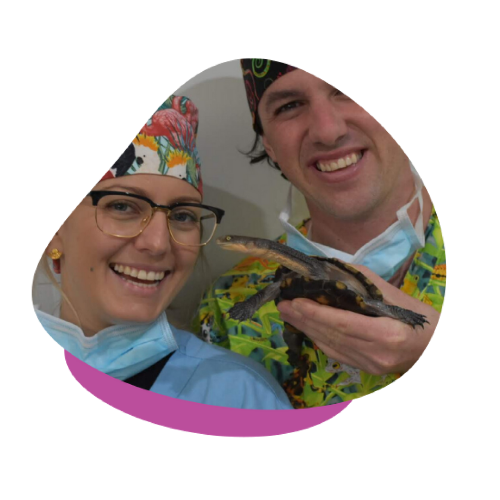This care sheet can be used for the main species of turtle that are found in captivity in Australia. This includes the long neck species (Chelodina spp) and the shorter necked species (Emydura and Elseya spp). Each one of these species have different requirements and the sheet below is a basic guideline used to keep them happy and healthy in an indoor enclosures.
Enclosure
The most common indoor enclosure used for Australian turtles are simple aquarium setups. There are more specialsied enclosures but regardless of the type a few simple measures can be used to set up the environment appropriately.
Setting Up Your Enclosure
- Most adult turtles require a minimum of a 1.2-metre-long tank but bigger is better
- The enclosure should be filled to approximately 2/3
- It is necessary to supply a large enough tank to also include an area for your turtle to bask with its entire body to be fitted on this level
- They must also be able to get onto this ramp easily and a sloping ramp at a suitable angle that is not abrasive is best.
- At a minimum, the water must be at least 2-3 times the length of the shell length (carapace)
- Substrate is not always needed, and it is easier to keep the tank clean without it. However, larger river stones are an appropriate and attractive option if substrate is desired. To this, 20 grams per litre of calgrit (turtle grit) should be added. Avoid substrates like small pebbles or sand as the waste particles cling to the edges of these and can raise the nitrogen levels
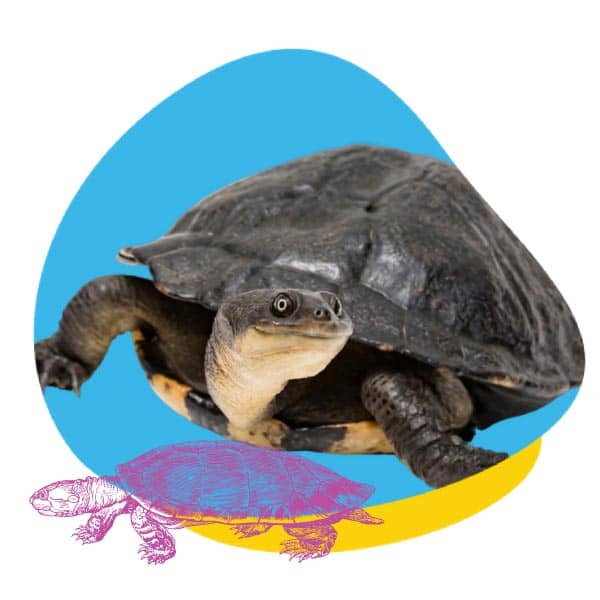
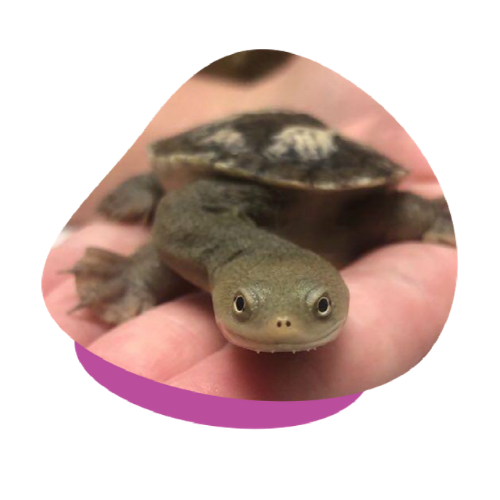
Tank Mates
Turtles in the wild are solitary and only come together for mating. It is not recommended to house turtles together as one will become more dominant and steal food from the other and will often bully the less dominant animal causing chronic stress that will eventually cause illness (which is often unseen). In addition, turtles can become aggressive towards each other and inflict serious bites.
Heating
Water temperatures have been recommended to range between 18-22 degrees for long neck and 20-24 degrees for short necked species.
A thermostat will be required to achieve this constant temperature.
- A thermometer above and within the water is required alongside the thermostat to ensure proper temperatures.
- Out of the water a basking area temperature needs to be supplied at 28-34 degrees (a separate thermometer and thermostat is needed in this area)
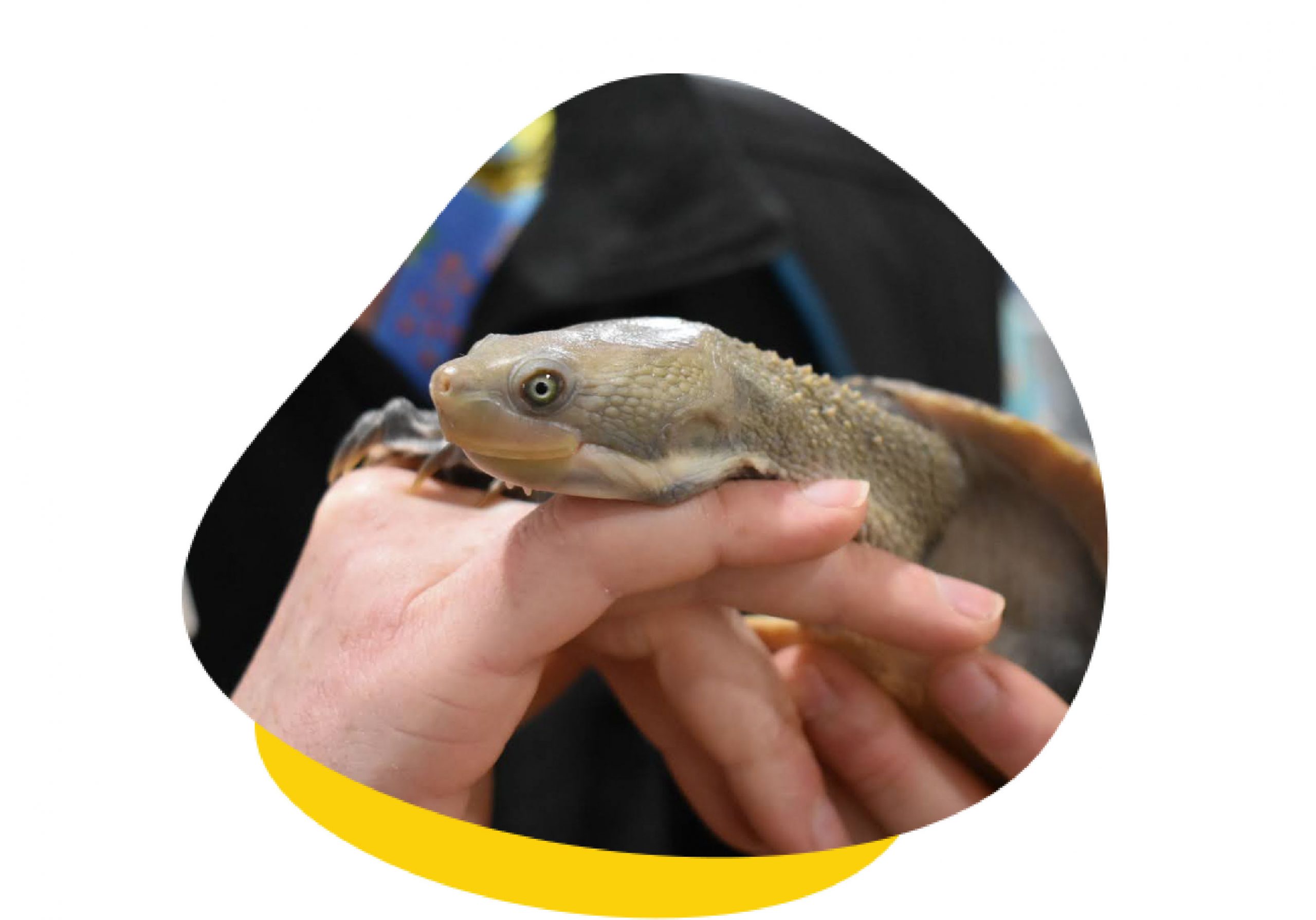
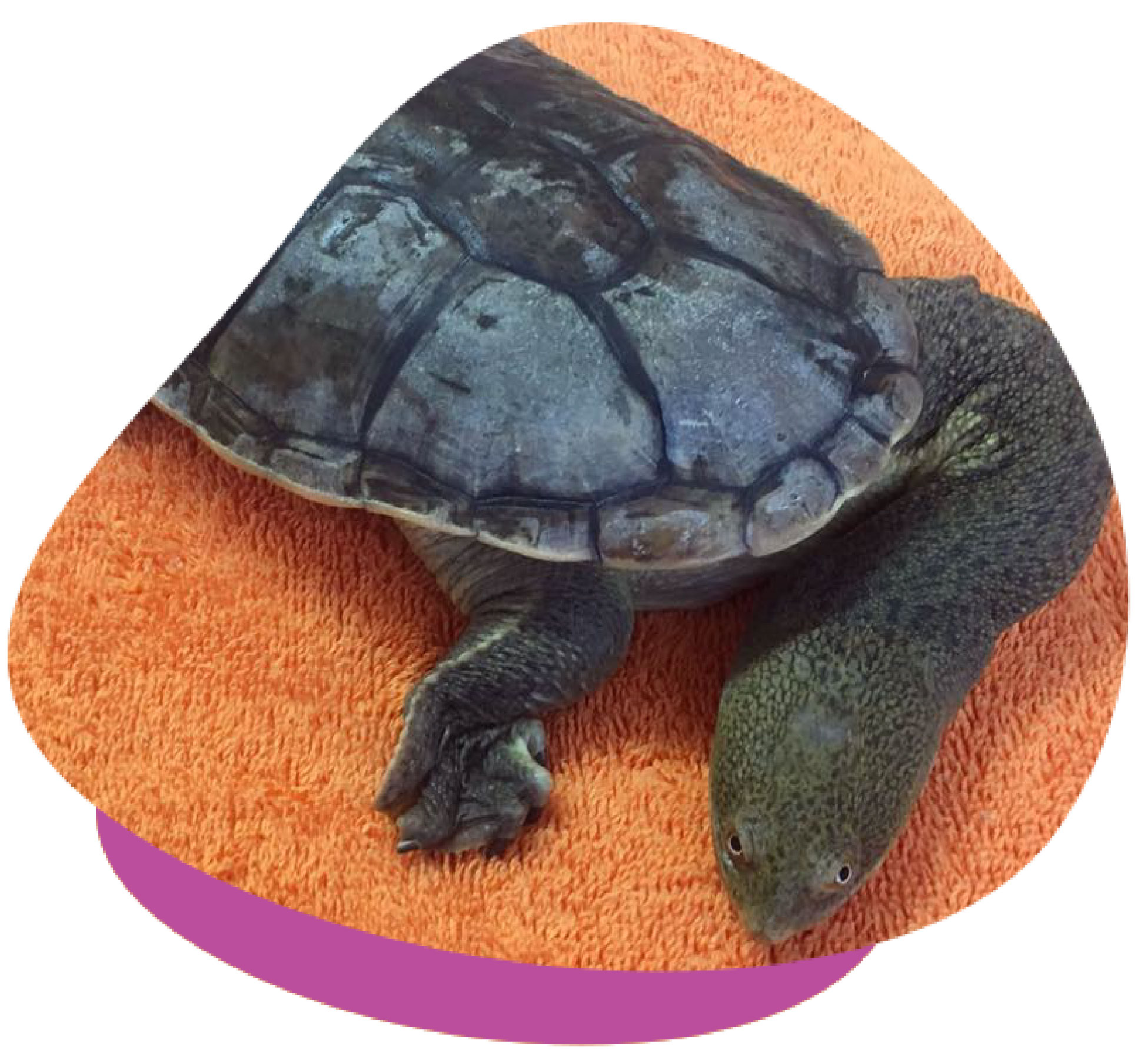
Lighting
All Australian turtles require adequate UV light to be provided. Appropriate UVB lighting will aid in Vitamin D3 production which is needed for Calcium metabolism.
It is also thought that the UVB light can help with natural behaviour such as foraging and feeding.
It is recommended that in addition to UV light provided artificially, natural UV provided by the sun is best and should be added into your weekly husbandry practice for around 30 minutes 2-3 times per week.
Essential Lighting Tips
- In both the tank or outside it is important to remember that UV does not pass through glass or plastic and thus all covering needs to be removed to allow it to be effective.
- If taken outside, make sure not to leave your turtle unattended or in an enclosure where it could overheat as this can be deadly
- In many cases it can be helpful to keep your turtle in shallow water when taken outside
- Replace all UV lights every 6-12 months (most are 6 months however the Arcadia brand lasts for 12 months) or when it is no longer effective based on a UV radiometer at the distance and strength required
- The lights should be on for a period of 12 hours a day, or following the natural cycle of the area in which the species you are keeping originates from.
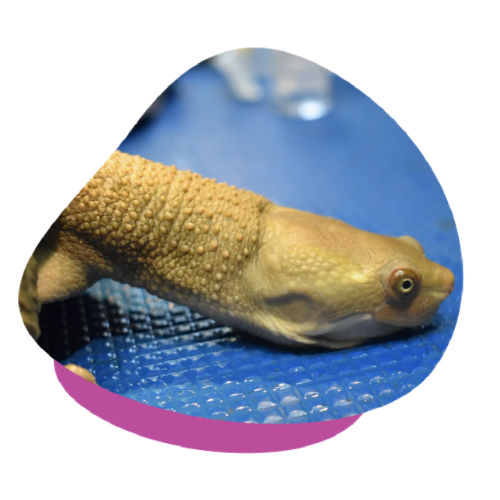
Outdoor Housing
For adult turtles, outdoor housing with supplementary heating where necessary is preferable if the species is found locally. This suits their larger size and aquatic lifestyle. Most importantly for good health, it is essential that both sunshine and shade are available to your turtle when in the water and on land. Ensure that no rough edges exist on the bottom and sides of concrete enclosures. It is recommended that a shade cloth or bird netting aviary-like cover be used to exclude predators. Enclosures must be secure and escape proof as many turtles are excellent diggers and surprisingly good climbers.
Basking Spot
All turtles need a basking area where they can haul out of the water – it is not normal for them to be in the water all the time. A basking lamp should be provided over this dock and set at 28-34C.
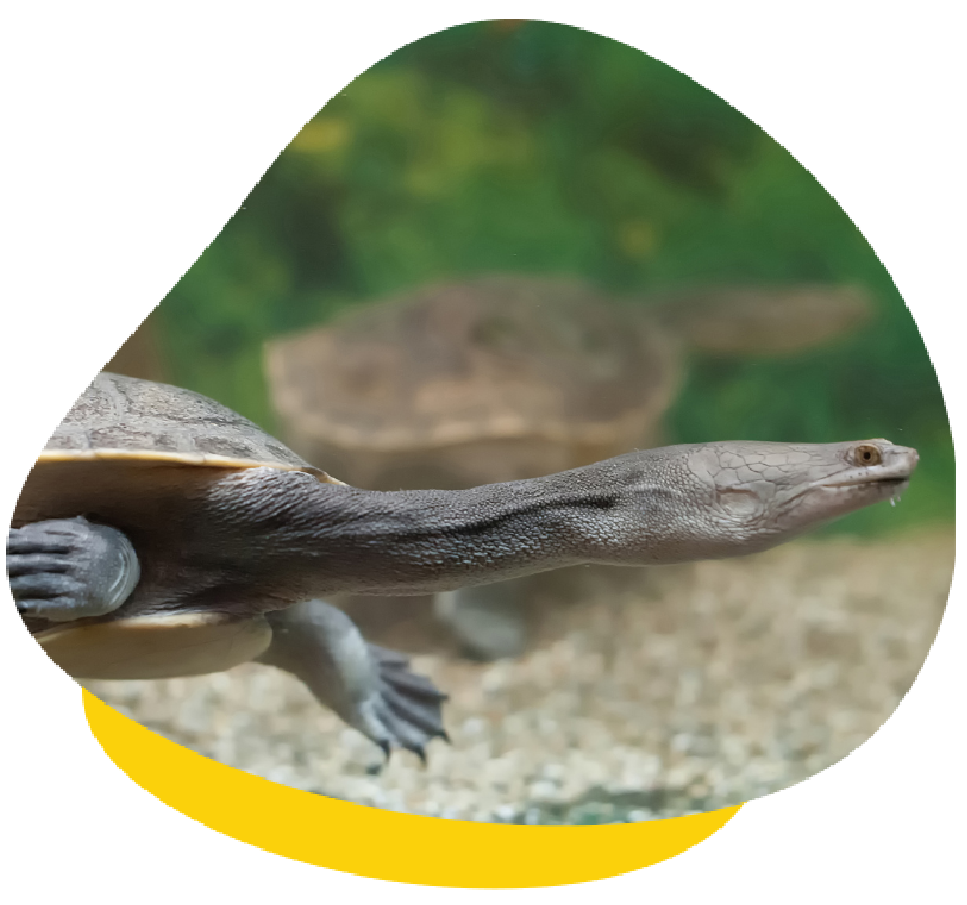
Water
As turtles spend most of their time in the water it is within reason to assume this is an integral component to good health. The optimal water temperature should sit between 18-24C maximum, depending on the species you are keeping. Most turtles live in much colder water than this, even in the tropical regions. In the summer you can switch the water heater off if you have one. Colder water temperatures will encourage basking and help prevent skin issues as well as illnesses associated with water quality problems.
- Water quality refers to different parameters that can upset this balance.
- pH refers to acidity or alkalinity. A pH ranging from 7.2-7.6 is recommended
- Hardness is measured in parts per million (this is achieved through dissolved salts), a harness of 140-210ppm is recommended this can be achieved by adding approximately 5 grams of aquarium salt to per litre of water.
- Filtration is needed continuously to maintain water quality and an external canister filter is usually the best option for this. The filter helps to remove nitrogenous waste.
- 20-25% water changes are still needed on a weekly or 2 weekly basis to ensure water quality remains healthy
- Tap water should be allowed to settle for twelve hours to allow chlorines to dissipate before adding it to the system
- Use a water conditioner when topping up tanks

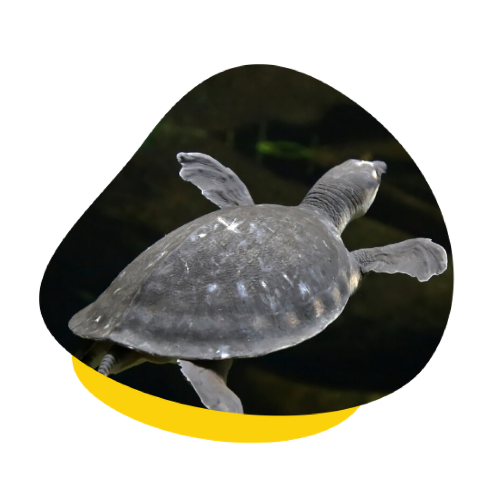
Weekly Testing for the Following Is Recommended
- Ammonia- waste product
- Nitrite- waste products
- Nitrate- waste products
- pH
- Hardness
Feeding
Diet should be varied, and items chosen based on the species you are keeping. As a general rule, long neck turtles are predominantly carnivorous (eating insects such as crickets, moths and flies) while short neck species are omnivorous and as such can be offered more vegetable matter.
Australian turtles generally need to be submerged in water to feed and defecate. Make sure to not overfeed your turtle and be sure that you don’t leave anything in the water they should not eat as they are opportunistic. The amount of food to be offered for an adult turtle should be the size of their head approximately 1-2 x per week and every 2 days for juveniles. Suitable plants should always be provided in the tank.
A Calcium supplement (Calgrit (turtle grit) is preferred to a calcium block) is recommended if they are not consuming whole fish and even if they are, Calgrit has added benefits.
Foods that are frozen have some of their nutrients and vitamins destroyed so it is best to offer fresh food where possible.
Any food not eaten should be removed after a couple of hours to minimize nitrogenous waste product build up in the water.
As an alternative they can be fed in a separate enclosure/ container with water used from the tank.
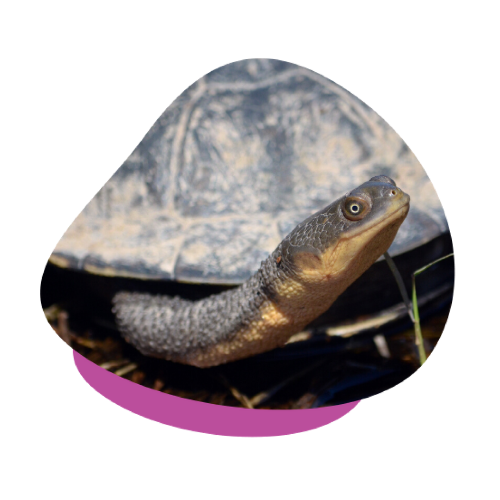
Feeding Long Neck Turtles
Long Neck Turtles are carnivorous with their main diet made up of a mix of insects such as crickets, woodies, moths and flies with an occasional worm. Earthworms are an excellent source of vitamin A. It is not recommended to feed raw meat or pet food as this effect the balance of the diet and can be harmful.
Fish such as gudgeons (feeder fish) and whitebait, freshwater snails, prawns and yabbies, can also be offered but need to be soaked in water to leach the salt out and have their heads, spikes and shells removed.
Blood worms, turtle blocks/pellets or mealworms should only be fed occasionally and as part of a varied diet.
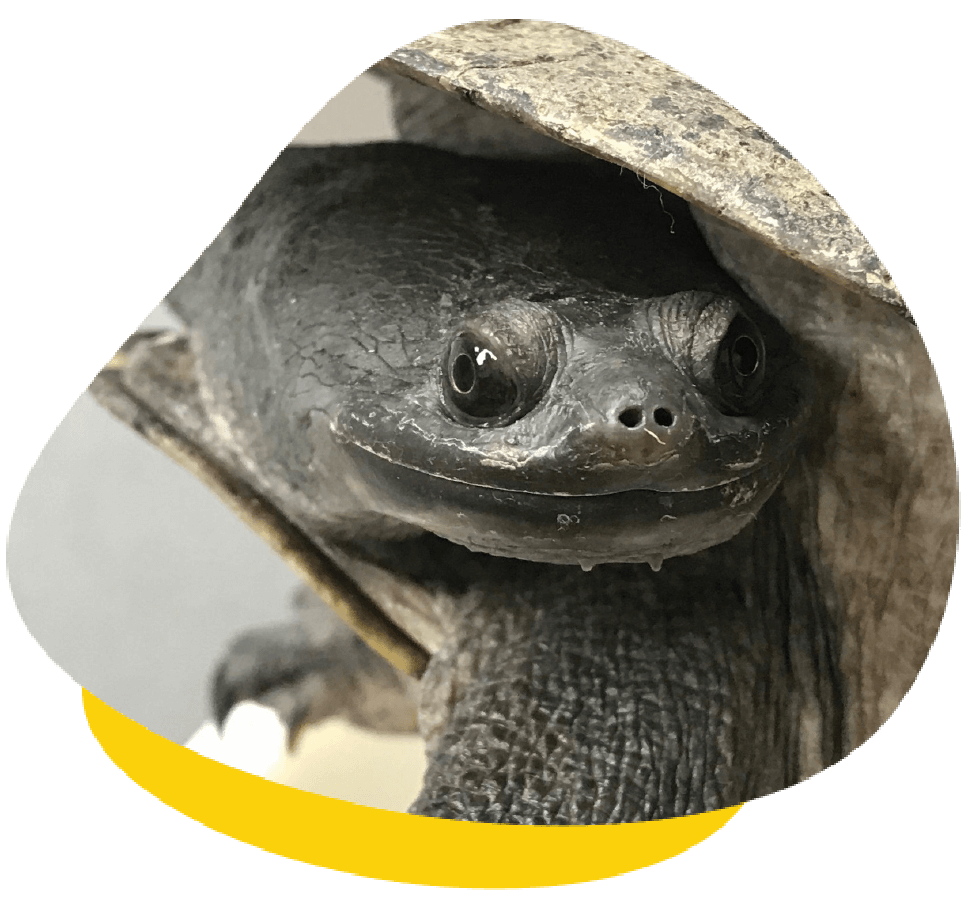
Feeding Short Neck Turtles
The guidelines for long neck turtles above are also relevant to short neck turtles however as they are omnivorous you can also offer a range of fruits and vegetables such as broccoli, cabbage, apples, spinach and Asian greens.
Other Recommendations:
- It is important to thoroughly clean your hands after handling your turtle
- Quarantine is essential for adding any new turtles into the enclosure
- A yearly visit to the vet is recommended with routine parasite and blood test screenings performed
- Keeping good records of weights and feeding habits can help alert to early signs of disease
- Transport your turtle to the vet in a container with air holes and on damp paper towels or towel but not in water
- 100ml sample of the tank water should be brought in for evaluation
